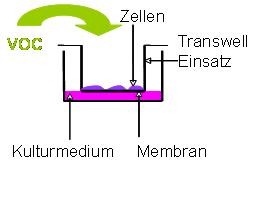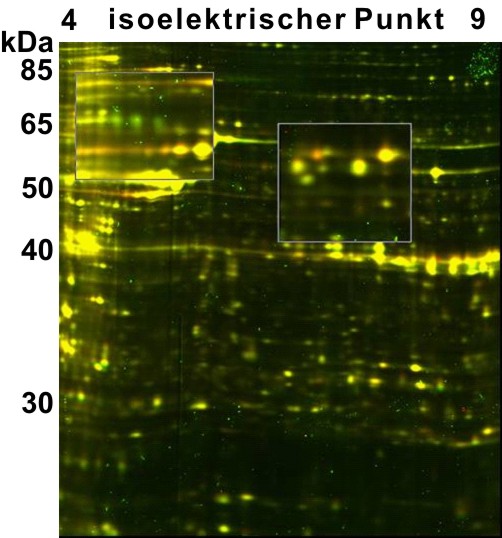Molecular mechanisms of VOC's effects on human cells
Indoor air quality gained in imortance in the past decades, because modern civilization spends 90% of the lifetime indoors. Since 1970, an increasing incidence of the sick-building syndrome was observed. The disease is characterized by chronic headache, sleep disorders, infections of the airways, irritations of eyes, nose and throat culminating in depressions. To our present understanding it is caused by long-lasting exposure to volatile organic compounds (VOCs). The main reason for a up to 10 times increased concentration of pollutants in indoor environments compared to outdoors are renovation activities. The so called VOCs show a pretty low boiling point, that's why they easily evaporate from materials like glues, paintings and furniture as well as cleaning products and are enriched in living rooms. There is only little information about the molecular mechanism that causes the sick-building syndrome. As cellular effectors act proteins either as receptors or as mediators. But it is not clear if VOCs interact directly with specific target proteins or if they affect the activity of cellular proteins in a more global way. Thus, the aim of this project is to identify and quantify changes in protein expression following exposure of human lung cell cultures to volatile organic compounds.

Figure 1:
Model of exposure of lung epithelial cells to volatile organic compounds (Fischäder 2006, Dept.of Environmental Immunology)
In the department of Environmental Immunology at the Helmholtz-Centre for Environmental Research immun-modulating effects of VOC exposure in cell culture models were studied. A differential expression of cytokines and chemokines of lung epithelial cells was observed. This indicated for the first time an inflammatory mechanism of immune reactions in eposed subjects.
In cooperation with the department of Environmental Immunology we try to identify more differentially expressed proteins following exposure to VOCs, that could be involved in the developement of the sick-building syndrome. Human lung epithelial cells are cultivated on membrane inserts and are exposed to the contaminants via the gas phase (Figure 1).
Cellular proteins are analyzed using Two-Dimensional Electrophoresis and differentially expressed proteins (Bild 2) are finally identified using mass spectrometry.

Figure 2: The usage of fluorescence dyes allows the separation of several samples in one protein gel. Both pictures can be merged together. Differences in protein expression of the two samples can be easily observed in red and green.
